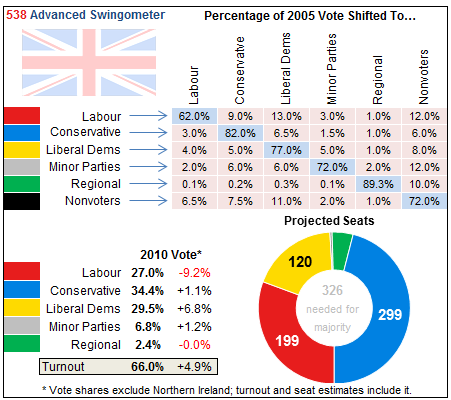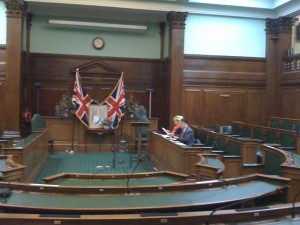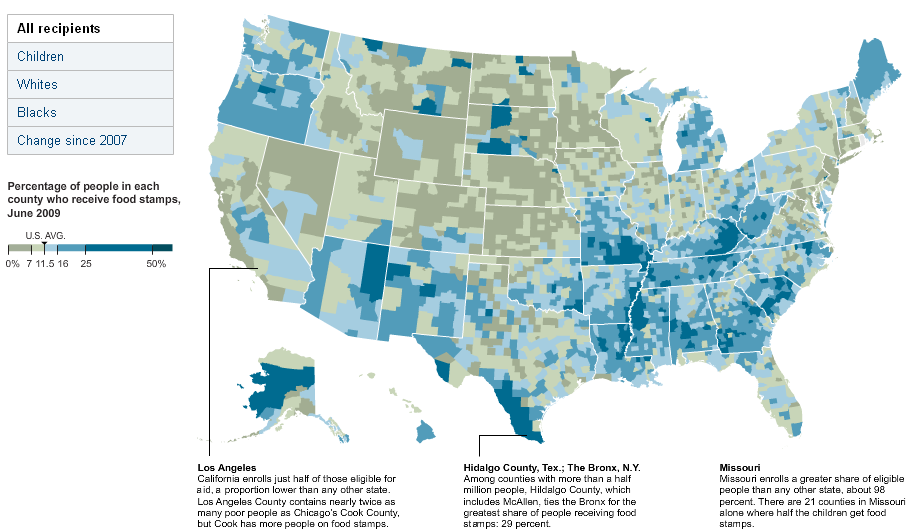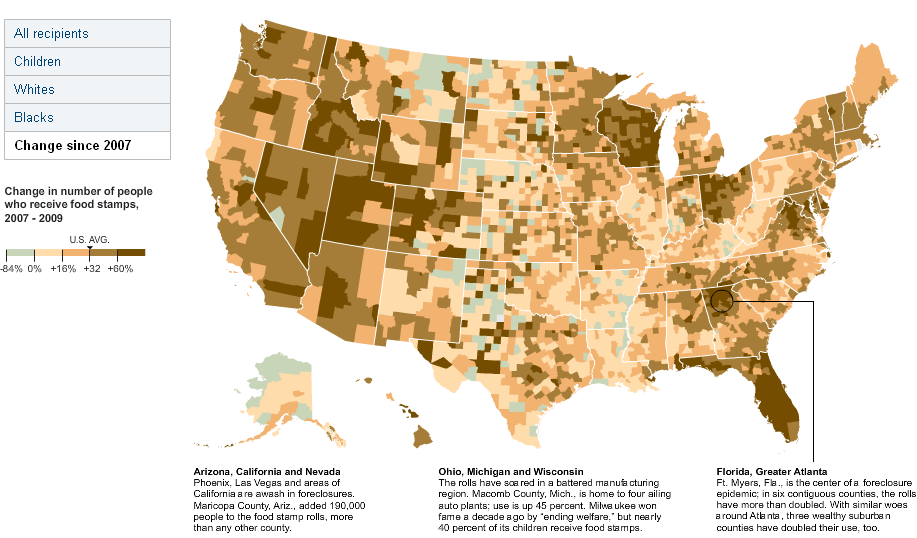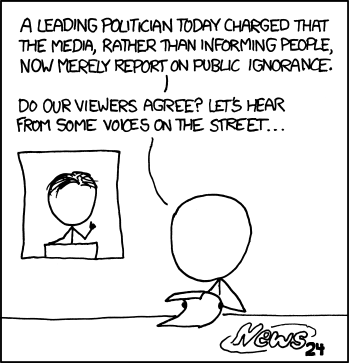 I know I’m not alone in getting frustrated by the tendency, in all forms of mass media, to report on reactions to an event or debate rather than provide substantial detail on the event or debate. I do realise that it’s because the drama of people’s reactions keeps the audience’s attention for longer, that most people aren’t actually interested in the finer points, that it bores them.
I know I’m not alone in getting frustrated by the tendency, in all forms of mass media, to report on reactions to an event or debate rather than provide substantial detail on the event or debate. I do realise that it’s because the drama of people’s reactions keeps the audience’s attention for longer, that most people aren’t actually interested in the finer points, that it bores them.
Jon Stewart lambasts America’s television news providers for providing anything but news, but for me the sharpest sense of frustration comes when I read a newspaper. I don’t really blame the providers of news for being consumed by the desire to entertain when they have sound, colour and moving pictures at their command. Well, okay, I do. But the defence of the newspaper editor is far weaker. Sure, there are technicolour tits on page three, but other than that and an over-sized font for the headlines, there’s not much the newspaper can do to distract you from the article itself.
Most people don’t read more than the first few paragraphs of an article. That’s why papers like the NY Times put those delicious, tantalising nuggets on the front page for the vrapid browsers among us and then send the hungrier reader off to page Q13, or whatever, to finish the piece. It’s not a practice we see in Britain, but I quite like it. It gives a visual honesty to our collective consumption of news. It lets me imagine, as I hunt through the paper for section Q, that the real meat of the article, the guts, the nitty gritty, the actual news, is available in there somewhere. Sadly, it almost never is.
I don’t want to single out The Grey Lady. There is no paper anywhere on earth that consistently lists out the facts in each article. I don’t even need quality writing. Just chop off the final paragraph and replace it with the facts in bullet point form. Nobody reads that paragraph anyway, even if it is the one the journalist fought most with the editor to keep. Leave the rest of the article peppered with Mr. and Mrs. Jones’s sob story and some politician’s outrage, but give me the facts quietly at the end, where it’s not hurting anyone.
Anyway, via Matt Yglesis, I see that a report has been written by Pew Research on the coverage of the health care debate in America. You can see the full report here or a summary here. I quite agree with Matt that the most telling aspect of the report is summarised in the following graph (although I disagree with his conclusion that this is not such a bad result):
 It’s a terrible diagram, because 3D graphs make it near-impossible to read the actual numbers (I wonder if Pew Research sees any irony in trying to present these data in a snazzy format), so let me give them to you:
It’s a terrible diagram, because 3D graphs make it near-impossible to read the actual numbers (I wonder if Pew Research sees any irony in trying to present these data in a snazzy format), so let me give them to you:
- 41% : Politics and strategy
- 23% : Descriptions of [proposed] plans
- 9% : [Current] State of health care
- 8% : Legislative process
- 6% : Obama’s health care plan
- 4% : Town hall protests
This is for all forms of media, though. The then current state of health care featured more prominantly in newspapers, which gave it 18% of their coverage. That’s better, but I suspect it’s deceptive. That 18% will have included innumerable emotion-dripping sob stories about some old lady and her dodgy hip. Disappointingly, online news sites, which have essentially zero marginal cost for an additional paragraph on the end of a story, gave only 8% of their coverage to describing the then current system.
Ah, well. Go read the report.
Update: Ezra Klein makes an excellent point:
It’s trite to say it, but the news business is biased toward, well, news. There are plenty of outlets that tell you what happened yesterday, but virtually no organizations that simply tell you what’s going on. Keeping up on the news is easy, but getting a handle on an ongoing situation that you’ve not really been following is hard. In recent years, we’ve seen the rise of outlets like FactCheck.org, which try and police lies that are relevant to the debate. But there’s really no one out there who is trying to give you the background to everything going in the debate. News organizations will write occasional pieces trying to sum up the legislation, but if you miss them, it’s hard to find them again, and they’re not comprehensive anyway. The fact that I still can’t direct people to one really good, really clear, really comprehensive online summary of the bill is an enduring frustration for me, and a real problem given the importance of the legislation and the number of questions there are about it.
If I edited a major publication — or even a medium-size one — I would begin each major legislative battle by detailing a few of my smartest, clearest writers to create a hyperlinked, fairly comprehensive, summary of the basic legislation. That summary would be updated throughout the process, and it would be linked in every single story written on the topic. As reader questions came in, and points of confusion arose, it would be expanded, so by the end, you’d have a document that was current, comprehensive, navigable and responsive to the questions people actually had about the legislation. Telling people what just happened is undeniably important, but given that most people aren’t following that closely, we in the media need to do a better job of telling people what’s been happening.
